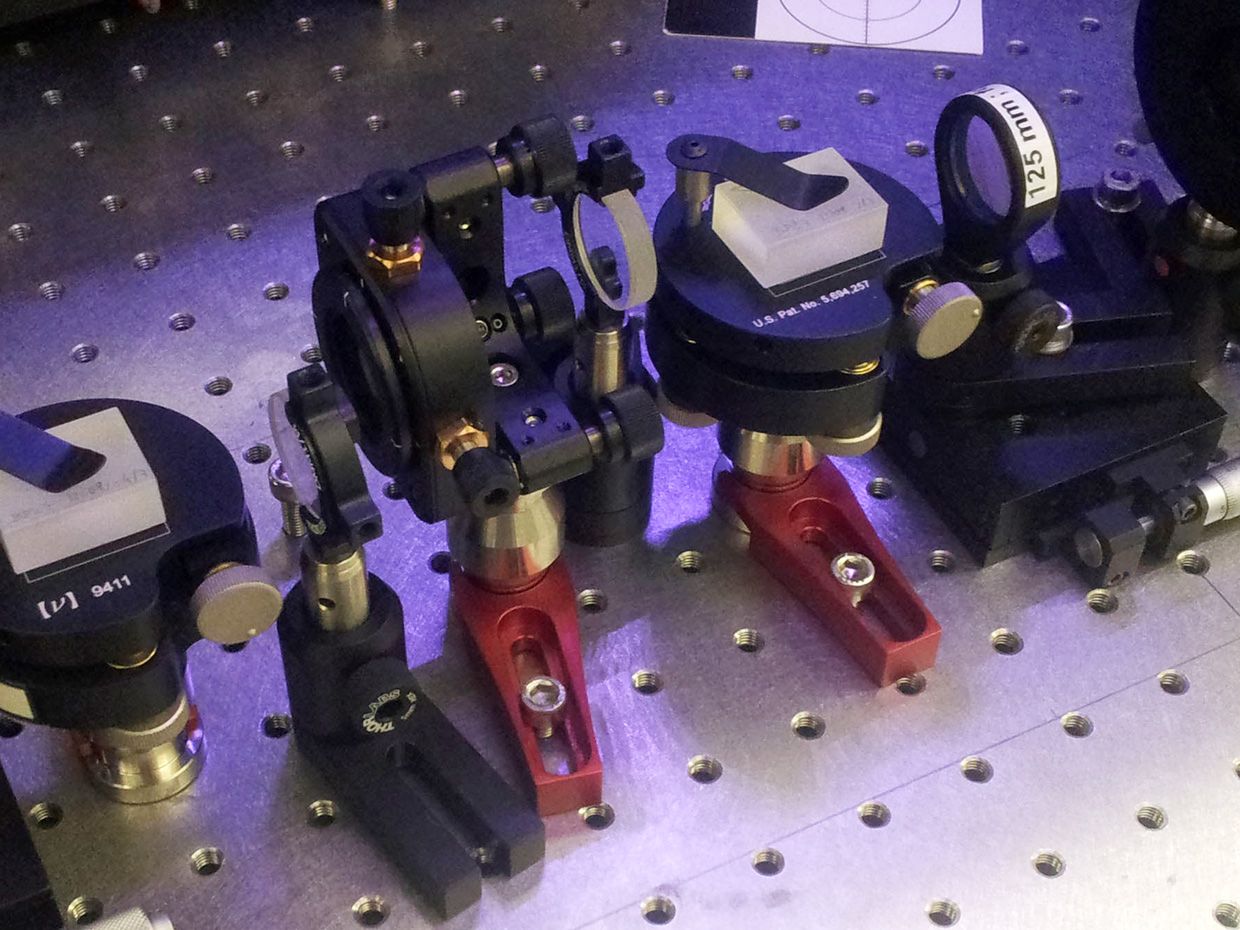A Quantum Drum Brings Quantum Mechanics to the Macroscale
Measuring quantum effects in macroscale objects could enable supersensitive sensors
One of the basic principles of quantum mechanics is that objects can act both as waves and particles. Also, these objects can be in a “superposition” in which they are in two different places at the same time.
One of the more elegant explanations of this quantum phenomenon is Schrödinger's Cat. In this thought experiment, a cat is put into box and a vial of poison is suspended in the box. The poison is released when the decay of a radioactive atom in the box is detected. The decay of the radioactive atom is a quantum mechanical process, leading to a level of uncertainty about when the atom decays. In this system, the atom has both decayed and not decayed. So, in essence, the cat is both dead and alive; the system is said to be in a state of superposition.
This quantum effect has always been talked about in terms of the atomic or molecular scale, never for macroscale objects. Now, a team of researchers led by scientists at the Imperial College London has described, in the New Journal of Physics, their ability to measure this quantum effect in a small—yet visible to the naked eye—drum. In the experiment, the drum is essentially struck by a drumstick of light—a few photons. The result: the skin of the drum has been made to vibrate and not vibrate at the same time.
While this experiment is primarily fundamental research, the researchers believe it could potentially lead to weak-force sensors capable of detecting gravitational fields as well as small biological molecules.
The “quantum drum,” according to Michael R. Vanner, principal investigator at Quantum Measurement Lab at Imperial College London, is a tiny mechanical oscillator that is so small and compliant that even the reflection of light can make it move. By hitting the drum with light—the drumstick—the researchers can control the drum’s motion.
“In our research, we explore how we can use the quantum mechanical properties of light at the single-photon level to make a quantum state of motion of our drum,” said Vanner. “This could then be called “Schrödinger's drum” in close analogy to the infamous ‘Schrödinger's cat’ thought experiment.”
Like Schrödinger's cat, which depends on the quantum nature of the decay of a radioactive atom, this quantum drum depends on the quantum nature of light in combination with photon counting measurements. The key breakthrough of the technology, according to Vanner, was the development of the drumstick of light.
“We start with a very weak laser field, which only ever has up to one or two single photons in the beam at any one time,” said Vanner. “Then we do a special type of “quantum measurement” on the field which causes the light to be in a superposition. Our drum then stands still and beats in a quantum superposition.”
Measuring this phenomenon is very challenging and remains part of the ongoing research program, according to Venner. “After we prepare a quantum superposition state of motion of the drum, we make very careful measurements of the drum’s position,” said Vanner.
What the researchers are looking for is what’s known in quantum mechanics as “quantum interference patterns.” This is where an individual particle, such as a photon, crosses its own trajectory and interferes with the direction of its own path. The best illustration of this interference is the double-slit experiment.
In the double slit experiment, a beam of light is focused on two slits in a membrane and a photographic plate behind the membrane records the photons that come through. When you cover one of the slits, all the photons are recorded on a single line on the plate. However, when you open both of the slits, instead of getting two lines on the photographic plate you get a multitude of lines, indicating that interference is occurring between the particle and wave nature of the light.
In the experiment, Vanner and his team observed the first interference fringe pattern in the motion of a mechanical resonator. The team are now working to improve their technique and are aiming to reveal quantum interference fringes in the drum’s motion at a tiny length-scale of about 10^-15 of a meter.
“Since we can make ultra-precise position measurements, we can then observe if a tiny external force was applied to our drum, changing the way it moves,” said Vanner. “This can be used to detect acceleration, gravitational fields, electric and magnetic fields, and even individual small biological molecules.”
Vanner and his team continue to work on improving the protocols and precision of sensors in a laboratory environment. An important next step is to perform these experiments at cryogenic temperatures. This will enable the study of quantum physics using a set of parameters that have never been explored previously, according to Vanner.
Editor’s note: This story was updated on 23 May to correct that the interference fringes in the drum’s motion at a tiny length-scale of about 10^-15 of a meter is an aim of the researchers’ theorectical work and not a result of this experiment.
Dexter Johnson is a contributing editor at IEEE Spectrum, with a focus on nanotechnology.
